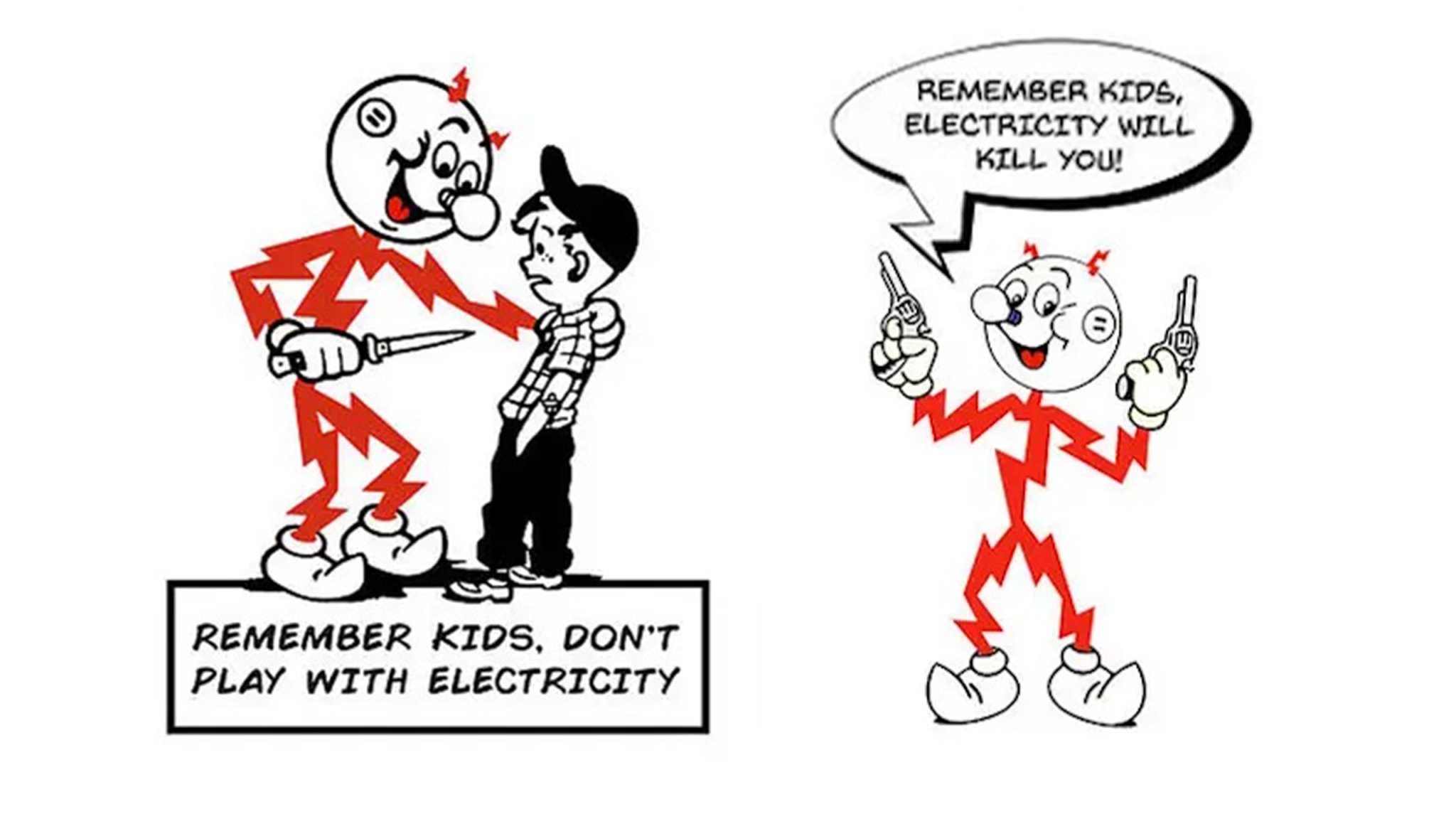

Electric cars need a serious image change to appeal to lovers of internal combustion. There’s obviously nothing wrong with them having no tailpipe emissions, but their environmental holier-than-thou image, as well as all of the EBITDA stock-ticker hunter-gatherer lizard-brain cocaine-subscription-box connoisseurs that Tesla attracts is off-putting. Fact is, high-voltage electricity is dangerous, and all of the most fun things in life are dangerous. There is no better representative for that than Reddy Kilowatt, a 20th-century cartoon turned pop-culture icon, representing both the miracle and, later, dangers of electricity.
Reddy, with a lightbulb for a nose and electrical sockets for ears, was introduced a long time ago, back when people still needed to be convinced that getting power wired into their homes had advantages. Back then he was seen as a friendly Disney-esque cartoon that reminded people, often through song and dance, that it was a good idea to microwave their Thanksgiving turkeys.

That’s all well and good, but the more relevant part of Reddy’s story, at least for my purposes, happened around the time people needed to be talked into buying televisions. The character was ultimately a symbol of consumption, and when the environmental movements of the late 1960s and early 1970s rolled around, Reddy was in a tough spot.
The character’s copyright owner, RKI, attempted to transition him into a more environmentally friendly role—planting trees and installing more efficient types of lightbulbs. It didn’t really work. The fact that Reddy was featured on a sign near the entrance of the Three-Mile Island nuclear plant couldn’t have helped. That’s an image straight out of a Fallout game.

Eventually, satirists and editorial cartoonists made Reddy into a symbol of everything bad about electricity. That’s where the unironic use of Reddy as a character more or less ends, although some utilities, like the Barbados Light and Power Company, still use him as a part of their logo.
Gradually, Reddy became a cartoon that gets satirized like any other, except he was explicitly associated with high voltage. This naturally led to stickers, T-shirts, posters, and other merchandise with Reddy’s friendly grin. In many instances, he’s seen threatening at least one child with a switchblade, with the caption “Remember kids, electricity will kill you!”

Perhaps unsettling, but true. High-voltage electricity will kill you, the same way many parts of ICE cars can be dangerous. There is something both frightening and very appealing about that. People like powerful cars, and, generally, the more powerful something gets, the greater a hazard it is to human health.
Highlighting the impressive power of electricity could be a way to get more ICE enthusiasts on board with electric cars, especially from a DIY or aftermarket perspective. I’m not saying it has to be Reddy Kilowatt winding up to drive a knife into somebody’s chest, but the idea that high voltage can be harnessed to make cars fun? That’s worth advertising.
A character like Reddy could be used to distance electric propulsion from its political, environmental, and social baggage, and establish it with the sheer force that electric power offers, kind of like what GM’s tried to do with the Hummer EV. For an automaker like Dodge that’s soon to translate its lineup of ICE muscle cars into EVs, that could be beneficial. We’ve seen the result of years of green-oriented preaching about the importance of BEVs to the general public. To get more people on board, the message needs to adapt to appeal to a more diverse audience.
Am I serious? Kind of. I plan to build more electric go-karts soon, and as soon as I get into the deadly voltage range—which isn’t that hard—I’ll be slapping Reddy on my creations as a reminder of both the danger and fun that power enables. Automakers should find a hero like Reddy, too.
Got a tip or question for the author? Contact them directly: peter@thedrive.com